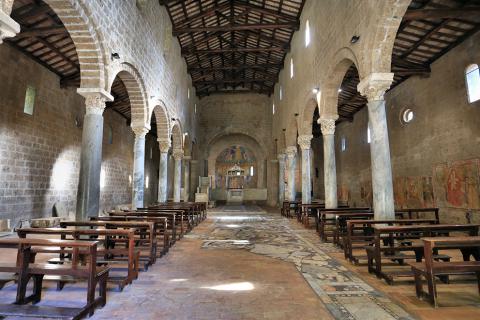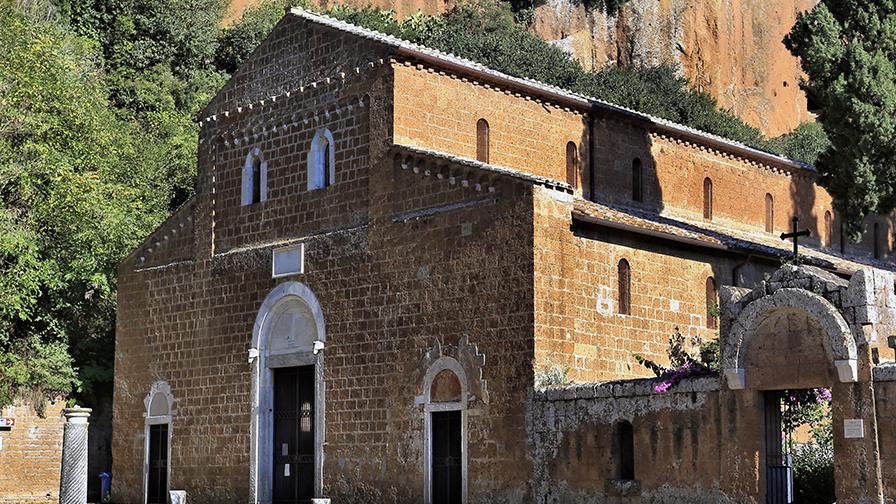First built during the VIII century, the Basilica is a classic example of Romanic-Lombard architectural style. Located in the middle of the enchanting Suppontonia Valley, at the foot of the old village of Castel Sant’Elia and the Santa Maria Ad Rupes shrine, Saint Elia’s Basilica is situated on the place where long ago was the Benedictine and Anchorite monastery.
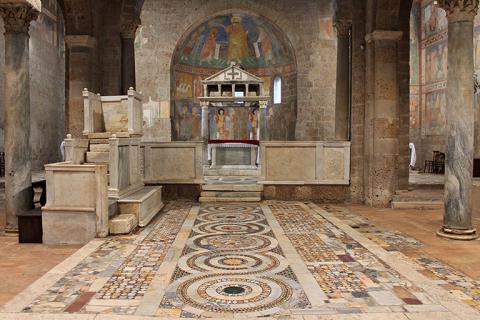
Full of iconographies, the church has an artistic repertoire of great value. On the main door we can see marble with symbolic vegetal and animal decorations incorporated in a much older portal of unknown dating. The eternal battle between the good and the evil is told in the portal relieves (particularly in the lintel) using Christian symbolic animals such as the eagle, symbol of temperance, the lion, embodying the dual meaning of good and evil, and the rams guarding the entrance.
Here starts the journey of the faithful through spirituality. The simple shapes and the predominating masses on the empty areas make the interior of the Basilica a classic Romanic place of worship, where the Christian man finds himself escaping from the fatigues of his daily life, or takes part in assemblies used to make important decisions for the whole community.
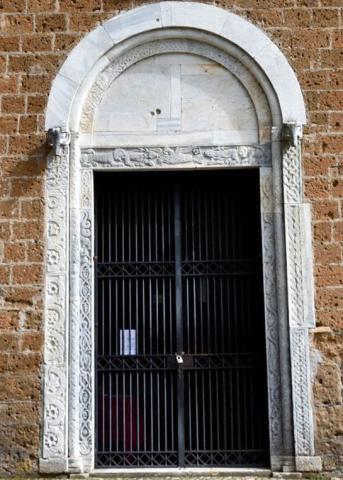
The layout of the church’s inside can be seen already from the façade (dated back probably to the XII century), with the three dimly lit aisles and the frescoed transept, home of the rising sun (Sol Levante), inscribed in a trapezoidal plant as a perspective play.
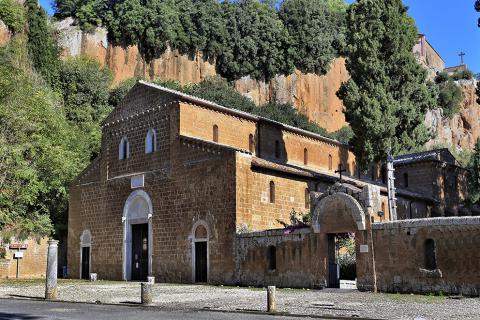
The tabernacle stands out at the center of the transept; based on four marble columns and with the Cosmatesque cross at its top, it recalls the colors and the harmonious patterns of the floor. The apse is completely decorated with frescoes representing the figures of Christ the Redeemer and twelve lambs, symbolizing the disciples.
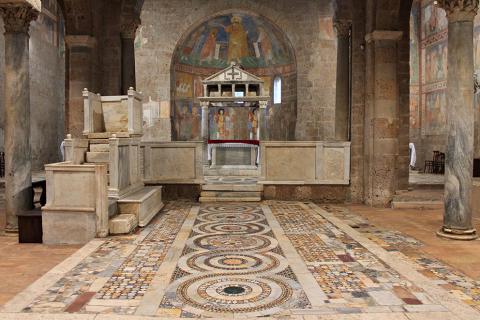
Below is the procession of the holy Virgins heading towards a missing figure. The whole cycle appears clearly to be of Byzantine inspiration, and dates back to the XI century. The frescoes on the right and left walls appear instead to be painted by the two brothers Stefano and Giovanni (probably two of the monks who lived there); in particular we can see the scenes representing Saint John’s Apocalypse.
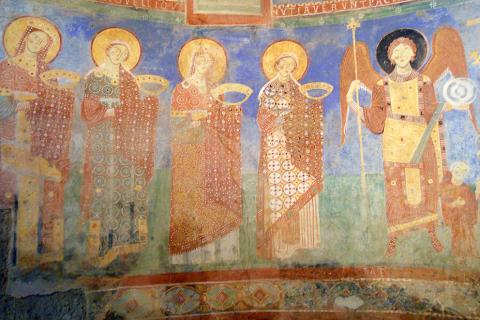
The marble pulpit on the left side of the main aisle was placed there only afterwards, as well as the majority of the marble items now present in the Basilica; the great columns too may seem appertaining to an ‘’unrelated corridor’’, since the stylistic diversity. It has been found that, in fact, these columns come from ancient Roman villas situated nearby.
